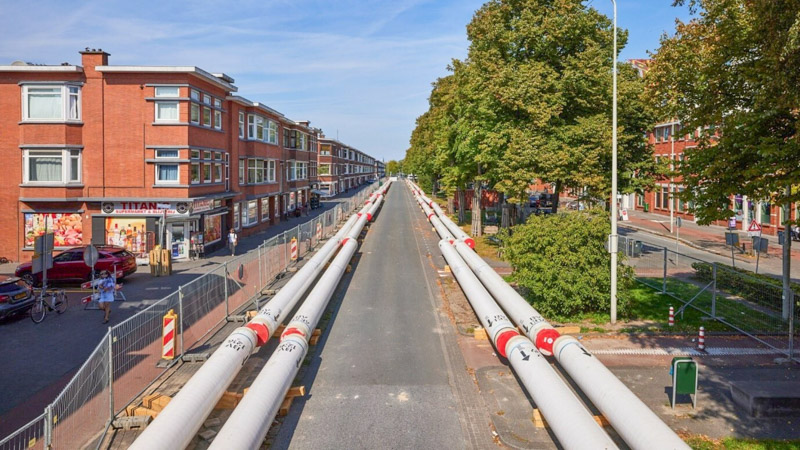
Carbon capture, shore power installation Cruise Port Rotterdam and more
Porthos will make it possible to capture and permanently store 2.5 million tons of carbon a year, making carbon storage an essential measure for the industry to help meet the Dutch climate objectives.
Installation national hydrogen network
The first of four hydrogen plants, the Holland Hydrogen 1, is currently being built in the conversion farm (Maasvlakte). This 200MW hydrogen plant, which uses electricity from wind farms at sea to make green hydrogen, is expected to deliver the first green hydrogen by 2025. Additionally, the envisaged Delta Rhine Corridor will be the connection with Germany.
Shore power installation for cruise vessels
The installation of shore power for vessels at Holland Amerika quay started in early June 2023 and will be completed in the fourth quarter of 2024.
The number of port areas opting for shore power is increasing. Shore power facilities are being installed at various locations along the Nieuwe Waterweg (the water way to Rotterdam), for instance at the DFDS terminal in Vlaardingen. In March this year, DFDS (which also operates line and ferry services to England and Ireland) officially commissioned a shore power installation for vessels berthed at the quay. DFDS uses green shore power supplied by Rotterdam Shore Power, a joint venture of Port of Rotterdam and energy company Eneco. Stena Line in the Hook of Holland made the transition to shore power 13 years ago for its ferries berthed there at the quay.
Reuse residual heat
The residual heat from the increasingly cleaner industry in the port area of Rotterdam is led by pipeline to homes and companies in the province of Zuid-Holland. The residual heat that used to disappear in the air or be discharged into the port water is now reused e.g. for home heating or hot showers.
Thanks to the WarmtelinQ pipeline network, reuse is increasingly growing.
Carbon emissions port area 1/3 lower
In 2023, the carbon emissions in the port decreased by 2.2Mton (10%) compared with the preceding year. Meanwhile, the emissions have dropped to a level that is 1/3 lower than in 2016.
The decrease is primarily due to the two coal-fired power stations at Maasvlakte: in 2023 by more than 2Mton (38%) less carbon than in 2022. To reduce carbon emissions in the port (2030) in conformity with the European and Dutch ambitions by 55% in comparison with 1990, carbon in the port is being reduced to 9.3Mton in 2030. No stone is left unturned, and the process is progressing and well on its way.

